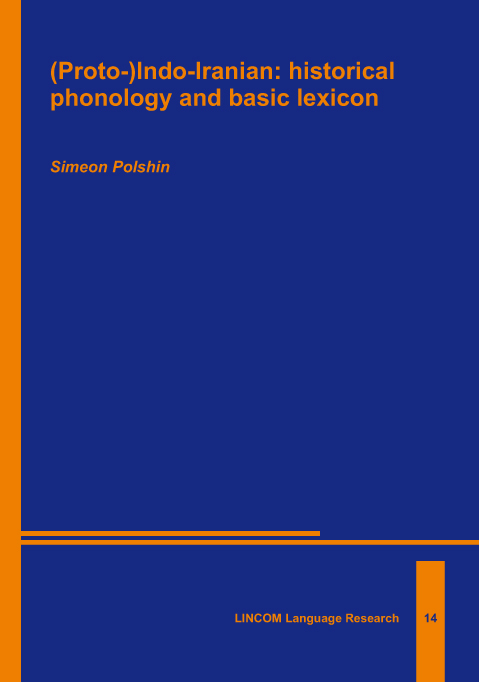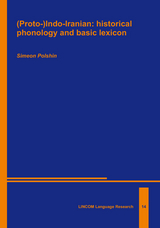(Proto-)Indo-Iranian: historical phonology and basic lexicon
Seiten
Within the list of approx. 180 selected basic meanings such as ‘black’, ‘hand’, ‘rain’ etc, a lexical database of approx. 45 Indo-Iranian languages, including such rarely accessed ones as Dardic and Nuristani, is prepared. By applying the methods of historical linguistics, this lexical database allows answering the following questions.
1.Internal classification of Indo-Iranian languages using quantitative methods. This includes the following topics. 1.1. New subgroup of Indo-Iranian languages of those called “outer” ones is detected. 1.2. It is shown that Dardic, Nuristani and “outer” languages form a separate sub-branch of Indo-Iranian more close to Indo-Aryan (in the strict sense) than to Iranian
2.Areal relations between these three sub-branches of Indo-Iranian are studied using both qualitative and quantitative methods. Two major directions of areal influences are found. 2.1. Iranian influence on Dardic, possibly as a by-product of Islamization. 2.2. Early Indo-Aryan influence on Dardic-Nuristani-“outer” languages, possibly on their common ancestor.
3.Historical phonology of Indo-Iranian languages is studied for the first time on its own right, not simply as an exponent of the assumed Proto-Indo-European one. Rows of regular phonemic correspondences between Indo-Iranian languages are identified and the phonemic values of proto-phonemes lying behind these rows are discussed, in particular the nature of Indo-Iranian aspirated stops, and the reflex of Indo-European palato-alveolar *k’.
4.Within the above-mentioned list of basic meanings, Proto-Indo-Iranian basic lexicon is reconstructed in the form of approx. 400 proto-roots; only about 150 of them have reflexes both in Sanskrit and Avestan, which justify the need to go beyond the usual Sanskrit-Avestan comparisons. Etymological dictionaries of concrete Indo-Iranian languages such as Sanskrit, Ossetic, and Khotanese, are extensively used.
1.Internal classification of Indo-Iranian languages using quantitative methods. This includes the following topics. 1.1. New subgroup of Indo-Iranian languages of those called “outer” ones is detected. 1.2. It is shown that Dardic, Nuristani and “outer” languages form a separate sub-branch of Indo-Iranian more close to Indo-Aryan (in the strict sense) than to Iranian
2.Areal relations between these three sub-branches of Indo-Iranian are studied using both qualitative and quantitative methods. Two major directions of areal influences are found. 2.1. Iranian influence on Dardic, possibly as a by-product of Islamization. 2.2. Early Indo-Aryan influence on Dardic-Nuristani-“outer” languages, possibly on their common ancestor.
3.Historical phonology of Indo-Iranian languages is studied for the first time on its own right, not simply as an exponent of the assumed Proto-Indo-European one. Rows of regular phonemic correspondences between Indo-Iranian languages are identified and the phonemic values of proto-phonemes lying behind these rows are discussed, in particular the nature of Indo-Iranian aspirated stops, and the reflex of Indo-European palato-alveolar *k’.
4.Within the above-mentioned list of basic meanings, Proto-Indo-Iranian basic lexicon is reconstructed in the form of approx. 400 proto-roots; only about 150 of them have reflexes both in Sanskrit and Avestan, which justify the need to go beyond the usual Sanskrit-Avestan comparisons. Etymological dictionaries of concrete Indo-Iranian languages such as Sanskrit, Ossetic, and Khotanese, are extensively used.
| Erscheinungsdatum | 24.05.2024 |
|---|---|
| Sprache | englisch |
| Maße | 170 x 240 mm |
| Gewicht | 480 g |
| Themenwelt | Geisteswissenschaften ► Sprach- / Literaturwissenschaft ► Latein / Altgriechisch |
| Geisteswissenschaften ► Sprach- / Literaturwissenschaft ► Sprachwissenschaft | |
| Schlagworte | Historische Sprachwissenschaft • Indo-Iranistik • Linguistik |
| ISBN-10 | 3-96939-192-X / 396939192X |
| ISBN-13 | 978-3-96939-192-1 / 9783969391921 |
| Zustand | Neuware |
| Haben Sie eine Frage zum Produkt? |
Mehr entdecken
aus dem Bereich
aus dem Bereich
kleines Lexikon deutscher Wörter lateinischer Herkunft
Buch | Softcover (2023)
C.H.Beck (Verlag)
CHF 20,95
Per Aspera ad Astra. Intensivkurs für Studierende zur Vorbereitung …
Buch | Softcover (2023)
Universitätsverlag Winter GmbH Heidelberg
CHF 32,15




